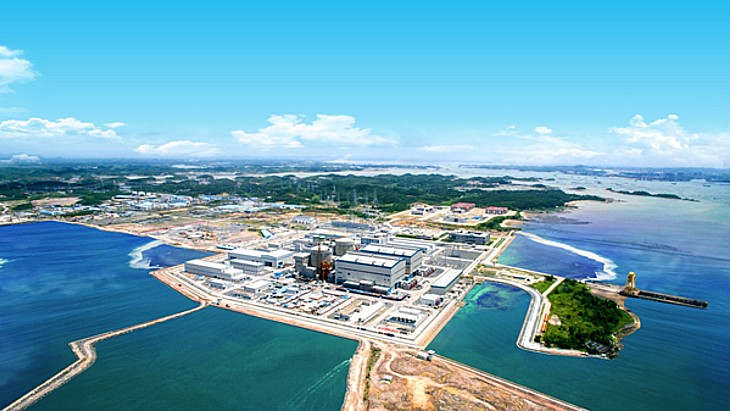Cold functional tests are carried out to confirm whether components and systems important to safety are properly installed and ready to operate in a cold condition. The main purpose of these tests is to verify the leak-tightness of the primary circuit and components - such as pressure vessels, pipelines and valves of both the nuclear and conventional islands - and to clean the main circulation pipes.
The test at Mochovce 3 began in mid-July and took 38 days to complete. During the test, the pressure in the primary circuit was raised to 13.7 MPa - more than 111% of the normal operating pressure - and heated to 120°C. The steam generators were also tested from the secondary circuit side, as well as feedwater and steam pipelines at pressures up to 7.65 MPa (166% of normal operating pressure).
Slovenské Elektrárne Director General Branislav Strýček welcomed the completion of cold testing, saying: "It is a key milestone that confirmed functioning of all tested components and took us closer to commissioning of the nuclear reactor."
Francisco Morejon, director of the Mochovce 3 and 4 project, said: "I'm glad we have met the schedule specified for the cold hydrostatic test. The testing has shown high professional approach and readiness of the team responsible for the commissioning process, as well as good cooperation with our contractors."
The next stage in the unit's commissioning will be hot tests. These will confirm the operability of the main and auxiliary equipment and systems of the reactor installation under normal operating temperatures and pressures.
The nuclear island suppliers include Inžinierske Stavby Košice for civil works; Škoda JS, Enseco and VUJE for the mechanical systems; PPA for the electrical systems and equipment; and Areva/Siemens for the control system. Other suppliers include ASE, Rolls-Royce and GSE. The conventional island suppliers are ZIPP for the civil works; Škoda Power and Modrany Power for the mechanical systems; and ČKD, PPA, Energo & Schneider, Brush SEM and Techimp for the electrical systems and equipment.
Construction began on Mochovce 3 and 4 in 1986 and resumed in 2008 after a 16-year hiatus. The units have an evolutionary design based on the VVER-440 V-213 pressurised water reactor with safety upgrades that make the units compliant with current national and international nuclear safety standards. The capacity of each unit is 471 MWe, but Slovenské Elektrárne said this could later be increased up to 535 MWe.
In line with Slovenske Elektrarne's strategic plan, approved by the company's shareholders in March 2017, the start of operations of Mochovce unit 3 is expected by the end of 2018 and unit 4 by the end of 2019. This is six years later than the original schedule. Once in operation, the units will be able to meet some 13% of Slovakia's electricity demand.
Slovenské Elektrárne is owned by the Slovak government, with a 34% stake, and a joint venture between Italian utility Enel and privately-held Czech energy group EPH. Enel, which sold half of its 66% stake in SE to Czech energy group EPH last summer, plans to sell its remaining 33% after completion of the two new units.
Enel acquired its stake in Slovenské Elektrárne in 2006 for EUR840 million, agreeing to complete construction of two additional Mochovce units as part of the transaction, but launched a program in July 2014 to sell its holdings in Romania and Slovakia, as part of an ongoing effort to reduce the Italian group's financial debt.

.jpg)



_92619.jpg)
_84504.jpg)

_58447.jpg)




